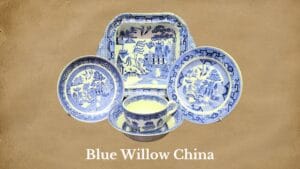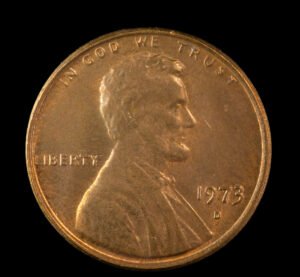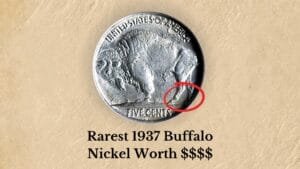Imagine finding an ordinary late 20th-Century 25-cent coin in your pocket and finding out that it’s worth $15,000! Sounds too good to be true, doesn’t it? But what if I tell you that your old 1967 Bicentennial Quarter is one such coin?
Minted to celebrate America’s 200th birthday, the 1976 Quarter Dollar can turn out to be a hidden gem, but only if you know what exactly makes it special. To help you, I’ve curated this value guide that explore rare errors, silver-clad varieties, and other precious features that make a Bicentennial Quarter a valuable find!
Brief History of the Bicentennial Quarter 1776-1976
The Bicentennial Quarter was a significant part of a coin program the U.S. Mint initiated to celebrate America’s 200th anniversary of independence. The program was first proposed in 1973, with production beginning in 1975 and continuing through 1976.
The 1976 Bicentennial Quarter’s distinctive reverse design resulted from a national design competition. Jack L. Ahr’s depiction of a Revolutionary War drummer boy alongside a victory torch encircled by 13 stars was selected for the quarter. This design replaced the standard eagle motif that had been used since 1932 on the Jefferson Quarter.
A unique feature of the Bicentennial Quarter is its dual date: 1776-1976. This was done to commemorate the 200 years from the signing of the Declaration of Independence to the bicentennial year.
Interestingly, despite bearing the date 1976, these quarters were minted in 1975 and 1976, with no standard quarters produced in 1975. The Bicentennial design was so popular that over 1.6 billion quarters were struck across both years until it was replaced by Flanagan’s original quarter reverse.
| 1976 Bicentennial Quarter | Key Facts |
| Coin Composition | 75% Copper, 25% Nickel over a pure Copper center; 40% Silver, 60% Copper (proof & Uncirculated) |
| Minting Location | Philadelphia, Denver, San Francisco |
| Year of Minting | 1976 |
| Weight | 5.67 g |
| Diameter | 24.3 mm |
| Thickness | 1.75 mm |
| Designer | John Flanagan |
| Face Value | $0.25 (25 cents) |
| Mint Marks | No Mint Mark – Philadelphia Mint, D – Denver Mint S – San Francisco Mint |
| Total Mintage | 1,685,804,975 coins |
Identifying a 1976 Bicentennial Quarter (Design & Composition)
Since a 1976 quarter dollar coin features a different design than the preceding coins, you must examine both sides and understand its composition and dimension to identify it.
1976 Bicentennial Quarter Dollar Obverse:
- Portrait of George Washington facing left
- The inscription “LIBERTY” above Washington’s head
- Motto “IN GOD WE TRUST” to the left of Washington’s neck
- Dual date “1776-1976” below Washington’s bust
- The designer’s initials “JF” (John Flanagan) at the base of Washington’s neck
- The mint mark (if present) to the right of Washington’s ponytail
1976 Bicentennial Quarter Dollar Reverse:
- Colonial drummer boy facing left
- Victory torch encircled by 13 stars
- The inscription “UNITED STATES OF AMERICA” along the top rim
- “E PLURIBUS UNUM” above the drummer boy
- Denomination “QUARTER DOLLAR” at the bottom
- The designer’s initials “JLA” (Jack L. Ahr) to the right of the drummer boy
Coin Composition, Size & Dimensions:
The Bicentennial Quarter was minted in two distinct compositions.
- Copper-nickel Clad: For circulation strikes, the United States Mint used the standard copper-nickel clad composition, consisting of an inner core of pure copper between outer layers of 75% copper and 25% nickel.
- Silver-clad Copper: The San Francisco mint produced silver-clad versions for collector editions. These contain an outer layer of 80% silver and 20% copper bonded to an inner core of 79% copper and 21% silver, resulting in % overall silver content of 40%.
Regardless of composition, all Bicentennial Quarters share the same characteristics. They weigh around 5.67 grams (0.2 ounces) with a diameter of 24.3 mm (0.955 inches). The thickness of the coin is around 1.75 mm (0.069 inches) with a defined reeded edge.
Assessing 1976 Bicentennial Quarter Value (4 Key Factors)
On average, a circulated 1976 Bicentennial Quarter is worth its face value of 25 cents. However, in uncirculated conditions or with rare features, it can be worth $1 to over $7,000, depending on factors such as the mint marks, condition, and the presence of errors or varieties.
1. Coin Grading and Condition
The condition of a Bicentennial Quarter significantly impacts its value. Coins are professionally graded on a scale from Poor (P-1) to Perfect Mint State (MS-70) for circulation strikes and from Poor (PO-1) to Perfect Proof (PR-70) for proof coins.
For the 1976 Bicentennial clad quarters, coins in MS65 condition or higher tend to be worth $1,000 to $7,000 or more. PR-65 (Gem Proof) or better is desirable for proof coins. The highest grades (MS-70 or PR-70) are scarce for this issue and can be worth thousands of dollars.
While it’s better to get your 1976 Washington Quarter graded by services like PCGS, NGC, and ANACS, you can also assess the condition manually. Key areas to examine when grading include the high points of Washington’s hair and the drummer boy’s figure, as these areas tend to show wear first.
Note: Full Bands (FB) is a designation given to quarters with fully struck bands on the drummer boy’s drum, which can significantly increase value.
| Coin Grading | 1976 25C No Mint Mark Clad | 1976-D 25C Clad |
| Poor (0) to Extremely Fine (XF45) | Face Value | Face Value |
| Almost Uncirculated (AU50) to Mint State (MS60) | Below $1 | Few more cents that face value |
| Mint State (MS61 – MS64) | $5 – $10 | Below $5 |
| Mint State (MS65 – MS66+) | $10 – $30 | $5 – $30 |
| Mint State (MS67 – MS67+) | $50 – $1,500 | $30 – $90 |
| Mint State (MS68 or Above) | N/A | $1,500 – $6,500 |
2. Mint Marks & Mintage
The total mintage for 1976 Bicentennial Quarters across all mints was an impressive 1,685,804,975 coins, including the uncirculated and proofs coins struck in 1975 and 1976. You can spot the minting location of a coin by the mint mark present on the obverse next to Washington’s ponytail.
The breakdown by mint and their respective values are as follows:
- 1976 25C No Mint Mark Clad: The Philadelphia Mint produced a total of 809,784,016 Bicentennial Clad Quarters in 1975 and 1976. In common mint condition (MS65), these quarter coins can sell for $5 to $10, with higher-grade examples fetching up to $2,000 or more. Circulated coins are usually worth the face value.
- 1976-D 25C Clad: With a total of 860,118,839, the Denver Mint minted slightly more quarters than Philadelphia, making them more common. Common mint-state quarters can fetch $5 to $10, while higher mint examples, like MS68, can sell for up to $5,000 or more.
3. Proof & Uncirculated Bicentennial Quarters
The San Francisco Mint produced two special versions of the Bicentennial Quarter for collectors: “Uncirculated Coins” and “Proof Coins.”
1. Uncirculated Bicentennial Quarter 1976
These were special quarter coins made in 1976 with a silver-clad copper (40% silver) composition for coin collectors. Unlike proof coins, they were made in high-speed press like regular Bicentennial quarters.
The average value of mint-state uncirculated Bicentennial quarters is around $10 to $200, while rare MS69 examples can easily fetch $5,000 to $6,000. But surprisingly, an MS60-graded 1976 Washington quarter sold for an auction record price of $19,200 on Heritage Auctions.
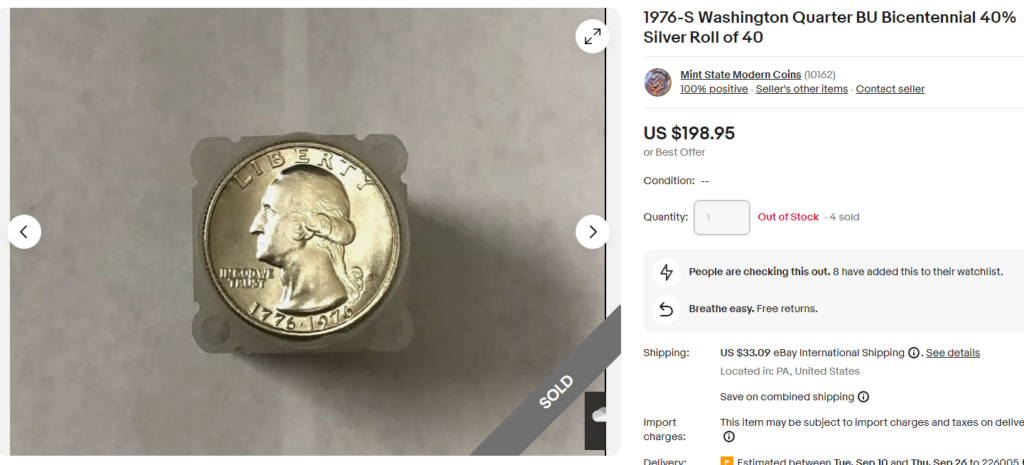
2. Bicentennial Quarter Proof Coin Value
The proof coins were struck using specially polished dies and planchets, resulting in a mirror-like finish. Now, the San Francisco Mint struck two different varieties of 1976 Bicentennial quarter proof coins:
1976 Bicentennial Copper-Clad Proof Value
The Mint produced a total of 6,995,180 clad proof coins in 1975 and 1976. Due to their regular compostion, this rare coin have a typical value of $10 – $40 in high-grade (PR67 or above) condition.
1976 Bicentennial Silver-Clad Proof Value
Apart from clad proofs, the San Francisco minted 3,998,621 silver-clad proofs (with 40%silver). These proof coins are more valuable than clad ones, with highest PR-grade examples fetching $50 to 100 or more.
Among proof coins, some exhibit special characteristics that can increase their value:
- Cameo Proofs: These coins have frosted devices (raised areas) contrasting against mirror-like fields. They’re typically worth 20-30% more than standard proofs.
- Deep Cameo (DCAM) Proofs: These exhibit an even stronger contrast between the frosted devices and mirrored fields. DCAM proofs can command a premium of 50-100% or more over standard proofs. For example, a PR70 DCAM-graded example sold for almost $200 on eBay.

4. Valuable Mint Errors & Rarities on 1976 Bicentennial Quarter
The following rare mint errors and anomalies can significantly increase the value of a Bicentennial Washington Quarter coin:
Doubled Die Obverse
This error happens when the die is struck multiple times and isn’t perfectly aligned each time. This misalignment creates a doubling effect. Look for doubling in the letters of “LIBERTY” and “IN GOD WE TRUST” and the mint date “1776-1976.”
A strong double die error can make a 1976 Bicentennial quarter extremely valuable. In Almost Uncirculated (AU) condition, a rare quarter with DDO error can fetch $200 – $1,000, while in mint state (MS65 or above), it can be worth $3,000 to $8,000 or more, like this rare Bicentennial quarter that sold for $8,400 on Heritage Auctions.
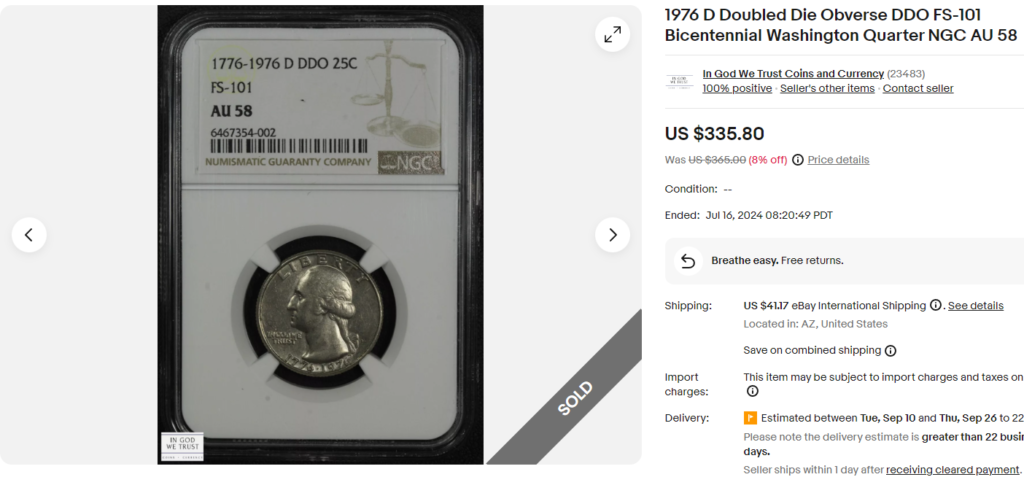
Off-Center Strikes
When a coin is struck off-center, part of the design will be missing. This happens when the planchet isn’t rightly located in the collar. The value of an off-center 1976 Washington quarter depends on the degree of the strike and the coin’s condition.
Generally, Bicentennial quarters with minor off-center (10% to %20) strikes ranges from $25 to $100. But those with dramatic off-center strikes (50% to 80%) can fetch $200 to $700, like this rare coin graded MS64 that sold for almost $550.
Missing Clad Layer
This error happens when a 1976 quarter dollar planchet skips the clad layering process on one or both sides and is struck in the die. You can easily identify this error coin by its red-brown color, due to the copper core.
I found a rare Bicentennial quarter graded MS63 with missing reverse clad layer that once sold on Heritage Auctions for over $420!
Broadstruck
A Broadstruck error occurs when a coin blank is struck without being properly aligned or centered between the obverse and reverse dies. Look for a larger quarter with a slightly irregular shape to spot this error coin.
Common mint state (MS65 or MS66) examples of a broadstruck 1976 quarter dollar can be worth $150 to $250 with higher prices for higher grades.
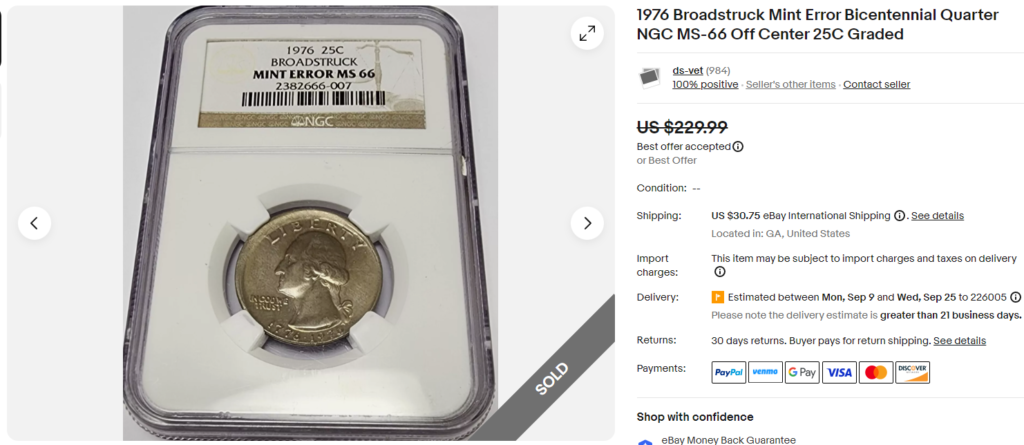
Struck on a Cent Planchet
As the name suggests, this error coin is produced when a 1975 25C is mistakenly struck on a cent planchet, which is smaller in size. Although rare to find, you can spot this coin by its cut-out edge (due to small size) and cent composition. Out of the very few 1976 cent quarters graded as of now, an MS67 RB graded coin sold for $4,025 on Heritage Auctions.
Note: To spot these errors, use a magnifying glass or coin loupe, and compare your coin to known normal coins. It’s best to get your coin authenticated by a professional grading service.
How to Spot a Fake Bicentennial Quarter 1976
Remember, a 1976 quarter dollar is worth the money only if it’s an AUTHENTIC coin. So, use the following expert tips to identify the fake or reproduced Bicentennial quarters.
- Weight Check: Real Bicentennial quarters weigh 5.67 grams. If it’s more or less, it’s likely fake.
- Dimension Verification: The coin should measure 24.3 mm in diameter. Any deviation can hint at a broadstruck error or a counterfeit.
- Mint Mark Examination: Genuine Bicentennial quarter dollars have the mint mark on obverse. Besides, there is no mint mark for Philadelphia Mint. Lastly, ensure it matches the style used in 1976.
- Edge Inspection: Look for reeding (grooves) around the edge. If you see plain edge or a reeded edge with cracks or uneven reeding, it’s a fake coin.
- Design Detail Analysis: Compare all the fine details on drummer boy design to known genuine coins.
- Date Verification: The obverse should have the date “1776-1976.” If a coin only has “1976,” it’s a fake.
- Magnet Test: Genuine Bicentennial quarters are not magnetic. If your coin reacts to magnet, it has a different compostion and is possibly a counterfeit.
As we saw above, The 1976 Bicentennial Quarter can actually be a valuable collectible despite being common in circulation. All you need to do is check if it is in mint state or has a unique mint error. So, whether you want to buy or sell a 1976 Quarter Dollar, this guide will come handy to find the best price for it!
But this is not the only quarter that’s worth the money. There are many other examples, such as the 1964 quarter, the 1967 quarter, the 1970 quarter, and the 1974 quarter! I have shared detailed guides on valuing all these old coins, which will help you in your coin collecting journey!
Note: This article is intended for informational, educational, and entertainment purposes only. Some images are illustrative and may not represent actual brands, products, or related entities. All trademarks, product names, brand logos, packaging, and other intellectual property referenced remain the exclusive property of their respective owners. Any brand mentions or references are provided solely for descriptive and educational context and do not imply any formal or commercial association.



